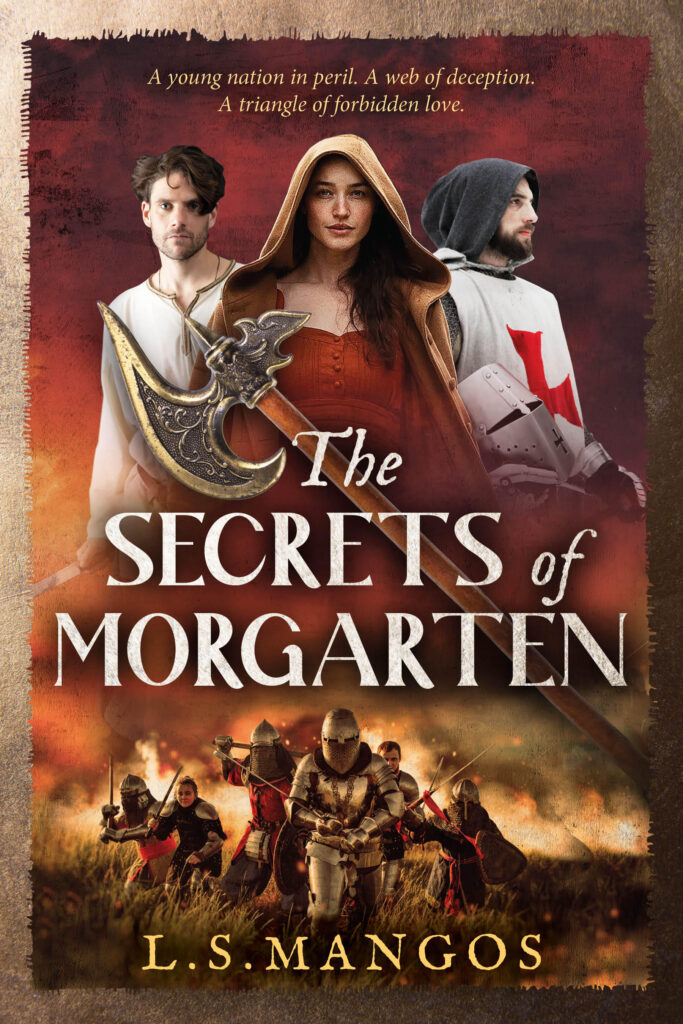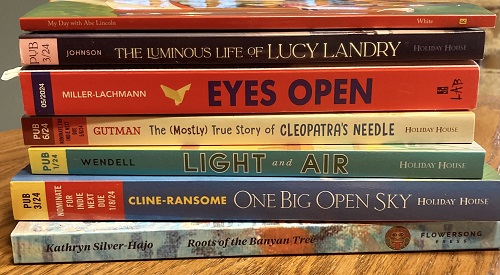A Study of Violence: Maggie O’Farrell’s The Marriage Portrait
WRITTEN BY LUCINDA BYATT
 Hilary Mantel’s death had just been announced when I heard Maggie O’Farrell talking about her as an inspiration, as a writer who crossed boundaries and genres. She praised the “deep architectural sculptural brilliance” of Mantel’s plots and structures. There is a similar brilliance, a crescendo of violence, in O’Farrell’s The Marriage Portrait (Tinder Press/Knopf, 2022). The marriage in question is that of Lucrezia de’ Medici, fifth child of the Duke of Florence, to Alfonso II d’Este, scion of one of the peninsula’s most ancient dynasties. At thirteen, Lucrezia was a “stand-in” bride following the death of her oldest sister, although she did not leave Florence to live with her husband until two years later. Having initially planned to start the novel with the wedding scene, O’Farrell admits, “I wasn’t happy with the shape into which this pushed the narrative. As soon as I put Lucrezia’s realisation that Alfonso is planning to kill her at the start, everything else fell into place.” This is the premise that drives the entire book.
Hilary Mantel’s death had just been announced when I heard Maggie O’Farrell talking about her as an inspiration, as a writer who crossed boundaries and genres. She praised the “deep architectural sculptural brilliance” of Mantel’s plots and structures. There is a similar brilliance, a crescendo of violence, in O’Farrell’s The Marriage Portrait (Tinder Press/Knopf, 2022). The marriage in question is that of Lucrezia de’ Medici, fifth child of the Duke of Florence, to Alfonso II d’Este, scion of one of the peninsula’s most ancient dynasties. At thirteen, Lucrezia was a “stand-in” bride following the death of her oldest sister, although she did not leave Florence to live with her husband until two years later. Having initially planned to start the novel with the wedding scene, O’Farrell admits, “I wasn’t happy with the shape into which this pushed the narrative. As soon as I put Lucrezia’s realisation that Alfonso is planning to kill her at the start, everything else fell into place.” This is the premise that drives the entire book.
O’Farrell makes no secret that her inspiration came from “My Last Duchess”, Robert Browning’s dramatic monologue that first appeared in 1842, in which the Duke of Ferrara Alfonso II casually relates to a visiting dignitary how he had his wife murdered. In Browning’s imagination, the duke draws back a curtain, a veil that is not only physical, to reveal the portrait of his wife, “Looking as if she were alive”. O’Farrell says she had been re-reading the poem, a favourite, when she found “I was idly wondering to myself one day whether Browning had based it on real events. I started researching the source of his inspiration and, within minutes, I was staring at a portrait of a young girl with auburn hair and a rather frightened gaze. I knew instantly that I would write a novel about her.” Not all her novels, she adds, come to her so instantly; “others creep up on you very slowly, standing behind you to give you a fright”.
The various iterations of lockdown imposed huge constraints on international travel, so I asked O’Farrell how this had affected her research and knowledge of the settings. “I had lived near Florence for a while, so I knew the layout of the city and the aspect of the palazzo,” she told me, “but nothing can replace the experience of standing in the rooms where your novel takes place. You get to see how the light falls from a window, how the reflection of the castello moat in Ferrara is cast upon the ceiling, the way a certain fresco is visible from one doorway but not another. You can trace the footsteps of one of your characters as they walk from bed chamber to salon. You learn what part of a city are visible from a terrace. No amount of time staring at maps and photographs can substitute this kind of research.”
Birds and animals appear throughout the novel. One of the first insights into Lucrezia’s character is her determination to see the tigress, caged in the basement of the Palazzo della Signoria (while the family was still living there), where her father kept a menagerie of exotic beasts. The encounter leaves her thrilled and distraught in equal measure. Later, after her engagement to the Duke of Ferrara, a small panel painting of a faina or stone marten speaks to her own considerable artistic ability, because every aspect of the animal is superbly rendered in textured layers of paint. “I’ve always loved the da Vinci painting, The Lady with an Ermine,” O’Farrell says, “and I was thinking of this sinuous white animal when I came up with Alfonso’s marten.” Lastly, the inclusion of Lucrezia’s favourite white mule in Ferrara was also inspired by Browning’s poem, in which the poet gives us a glimpse of “the white mule she rode with round the terrace”.
I asked O’Farrell about women and art at this time. “There has been more research recently on female artists of the Italian Renaissance, and I’ve read that there is a belief among some art historians that this period in history can be seen as the first wave of feminism. There were many women who made their living as artists and painters, most of whom were trained by their artist fathers – Sofonisba Anguissola, for example, Lavinia Fontana and Artemisia Gentileschi.” At the other end of the social scale, one of O’Farrell’s most memorable characters in this book is Sophia, the nurse, who succeeds – much to the discomfort of the palace officials – in disguising the advent of Lucrezia’s womanhood, therefore allowing her to stay in Florence for a few more precious months.
Recent research trends also fed into O’Farrell’s work, particularly with regard to women’s history. “Cosimo appears to have held women in great respect. He was devoted to his wife, Eleanora, and, unusually for his time and class, remained faithful to her during her lifetime.” Lucrezia is highly educated, which was not unusual for a girl of her status: “she and her sisters received the best education that money could buy. That said, Cosimo was content to marry off his young daughters into politically advantageous unions: this was the destiny he committed them to.”
O’Farrell has added a woman’s perspective to Browning’s chilling portrait of a man who controls his wife, even in death, choosing when to reveal her portrait: “since none puts by / The curtain I have drawn for you, but I.” Instead, here, it is Lucrezia who watches her husband closely. Domestic violence has an age-old history, and while such acts do not fit with the cultural perfection we tend to associate with Florence and Ferrara at this time, the lives of women then were fraught with dangers worse than childbirth. The words of the poem and the ferocious finality of the punctuation capture the most violent of these: uxoricide. “I gave commands; Then all smiles stopped together.” O’Farrell’s captivating retelling of this story circles back to the tigress, its markings of “burnished gold, fire made flesh”, “branded for exactly this, as if captivity had been her destiny all along”. Might the woman who touched the animal’s soft fur have had the wit to escape such a fate?
About the contributor: When not translating, Lucinda Byatt also writes and teaches topics relating to Italian history at Centre for Open Learning, University of Edinburgh. @Lucy13Byatt
Published in Historical Novels Review | Issue 102 (November 2022)






